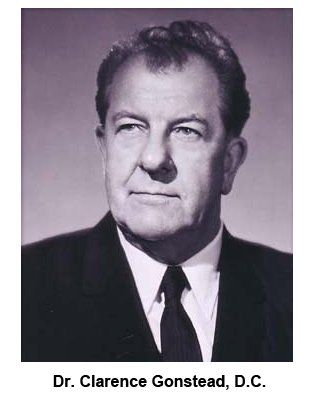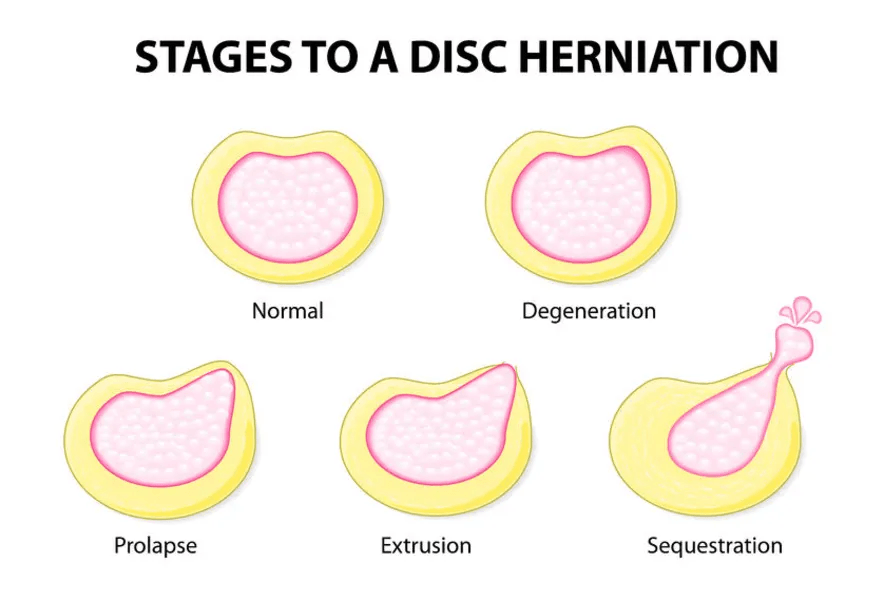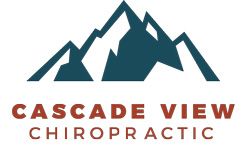Chiropractic Care
for Disc Herniation
The bones (vertebrae) that form the
spine in the back are cushioned by discs.
These discs are round, like small pillows, with a tough, outer layer (annulus) that surrounds the nucleus. Located between each of the vertebra in the spinal column, discs act as shock absorbers for the spinal bones.
A herniated disc (also called bulged, slipped or ruptured) is a fragment of the disc nucleus that is pushed out of the annulus, into the spinal canal through a tear or rupture in the annulus. Discs that become herniated usually are in an early stage of degeneration. The spinal canal has limited space, which is inadequate for the spinal nerve and the displaced herniated disc fragment. Due to this displacement, the disc presses on spinal nerves, often producing pain, which may be severe.
Herniated discs can occur in any part of the spine. Herniated discs are more common in the lower back (lumbar spine), but also occur in the neck (cervical spine). The area in which pain is experienced depends on what part of the spine is affected.


Causes for Disc Herniation
A single excessive strain or injury may cause a herniated disc. However, disc material degenerates naturally as one ages, and the ligaments that hold it in place begin to weaken. As this degeneration progresses, a relatively minor strain or twisting movement can cause a disc to rupture.
Certain individuals may be more vulnerable to disc problems and, as a result, may suffer herniated discs in several places along the spine. Research has shown that a predisposition for herniated discs may exist in families with several members affected.
Symptoms of Disc Herniation
Symptoms vary greatly, depending on the position of the herniated disc and the size of the herniation. If the herniated disc is not pressing on a nerve, the patient may experience a low backache or no pain at all. If it is pressing on a nerve, there may be pain, numbness or weakness in the area of the body to which the nerve travels. Typically, a herniated disc is preceded by an episode of low back pain or a long history of intermittent episodes of low back pain.
Lumbar spine (lower back): Sciatica/Radiculopathy frequently results from a herniated disc in the lower back. Pressure on one or several nerves that contribute to the sciatic nerve can cause pain, burning, tingling and numbness that radiates from the buttock into the leg and sometimes into the foot. Usually, one side (left or right) is affected. This pain often is described as sharp and electric shock-like. It may be more severe with standing, walking or sitting. Straightening the leg on the affected side can often make the pain worse. Along with leg pain, one may experience low back pain; however, for acute sciatica the pain in the leg is often worse than the pain in the low back.
Cervical spine (neck): Cervical radiculopathy is the symptoms of nerve compression in the neck, which may include dull or sharp pain in the neck or between the shoulder blades, pain that radiates down the arm to the hand or fingers or numbness or tingling in the shoulder or arm. The pain may increase with certain positions or movements of the neck.
Non-Invasive Treatment for Bulging, Ruptured, or Herniated Discs
Chiropractic care is a non-surgical treatment option for herniated discs. But what is a chiropractor’s approach to treating a herniated disc? Before we get to that, we need a quick review of what a herniated disc is.
What Is a “Slipped” Disc? Is It the Same as a Herniated Disc?
With the exception of the first 2 vertebrae in the neck—the atlas (C1) and the axis (C2)—there is an intervertebral disc between each vertebra of the spine. Discs act as a shock absorber and a shock distributor, and provide flexibility.
Imagine if you jump up and down. What would happen to the stack of bony vertebrae that make up the spine without the cushioning and support of these discs? Now, move your back from side to side. Again, you can visualize the give and take of the discs between the vertebrae. Without these discs, your spine couldn’t function.
Intervertebral discs don’t really “slip”—although the phrase “slipped disc” has come into popular usage to refer to bulging, ruptured, or herniated discs. Throughout this article, we’ll refer to herniated discs, which is the more correct term.
Your discs are made up of the annulus fibrosus (the tough outer layer) and the nucleus pulposus (which contains a soft, gelatin-like center). (See Figure 1 below.) When cracks occur in the outer layer of the disc, the material inside of the disc can begin to push out. Numerous factors can cause a disc to herniate.
For example, there may be too much stress on the disc due to poor posture or from being overweight. In fact, a herniated disc can be caused by a combination of factors or a physical injury.
For many people with back pain caused by a back pain condition (ie, herniated disc), the problem starts off small and then gradually builds until you start to feel symptoms, such as back pain. See Figure 2, which shows the various stages of disc degeneration.

Figure 2. A normal intervertebral disc is compared to degeneration and 3 typical stages to a disc herniation. Photo Source: 123RF.com.
For example, let’s say you sneeze and feel a sudden, sharp pain in your back. Then that pain progresses into leg pain or sciatica. You may have had an underlying herniated disc, and the sneeze was what triggered it to progress. So, yes: a sneeze (or a cough) can herniate an intervertebral disc.
Chiropractic Care and Herniated Discs
A chiropractor can help address back pain and other herniated disc symptoms. At your initial appointment, your chiropractor will go through your medical history, do a physical exam, and perform orthopaedic and neurological tests.
Your chiropractor will look for several things. These are important questions the orthopaedic and neurological exams can help your chiropractor answer.
- Are the reflexes intact? That is: are your nerves sending messages correctly? (The classic reflex test is when the doctor taps your knee with a small hammer and your leg kicks up.)
- Is there loss of muscle strength or signs of muscle wasting?
- Is there loss of sensation along the path of a nerve?
The chiropractor will also carefully look at your posture, and he or she may order an X-ray or MRI, if necessary, to help with the diagnostic process.
Chiropractors evaluate the entire spine. Even if you only have lower back pain, your chiropractor will examine your neck, too, for example. He or she wants to see how well your spine is functioning overall, and remember: What happens in one area of your spine can influence other parts of your spine and/or body.
After reviewing this information, your chiropractor can determine if you have an intervertebral disc injury. The type of disc injury you have will determine what treatments your chiropractor will use to address your symptoms.
Some patients are not good candidates for some types of chiropractic care treatments. For example, if you have cauda equina syndrome (a condition in which you lose control of your bowel/bladder with an accompanying intervertebral disc injury), then you will need immediate medical care as this is something that cannot be treated by your chiropractor.
In addition, if your chiropractor finds that you have advanced loss of strength, sensation, reflexes, and other unusual neurological findings, then he or she will refer you to a spine surgeon.
However, most intervertebral disc injuries are related to a herniated disc, and your chiropractor can provide you with various treatment options to address your pain and other symptoms.
To treat a herniated disc, your chiropractor will develop a treatment plan that may include spinal manipulation—also known as adjustments—and other chiropractic techniques to help ease your herniated disc symptoms. This will be an individualized treatment plan, but it may include manual therapy and therapeutic exercises.
The specifics of what are in your treatment plan are particular to your pain, level of activity, overall health, and what your chiropractor thinks is best. As with any treatment option, don’t hesitate to ask questions about what chiropractic treatments are being recommended and why. You want to make sure you understand what will be done and how it can help relieve your pain. Chiropractice treatment is safe and effective for most patients.
Below are some examples of chiropractic techniques used for herniated discs.
Flexion-distraction Technique for Herniated Discs
A common chiropractic technique is the flexion-distraction technique, which can be used to help address herniated disc symptoms.
Flexion-distraction involves the use of a specialized table that gently “distracts” or stretches the spine. This allows the chiropractor to isolate the affected area while slightly “flexing” the spine using a pumping rhythm.
There is usually no pain associated with this treatment. Instead, the flexion-distraction technique’s gentle pumping to the painful area allows the center of the intervertebral disc (called the nucleus pulposus) to assume its central position in the disc. Flexion-distraction may also improve disc height.
This technique can help move the disc away from the nerve, reducing inflammation of the nerve root, and eventually any associated pain and inflammation into the leg (if there is any related to your herniated disc).
With flexion-distraction, you generally need a series of treatments combined with adjunctive ultrasound, muscle stimulation, physiotherapy, supplementation, and at-home treatments (your chiropractor will let you know what those are). Gradually, specific exercises and nutritional recommendations will be incorporated into your treatment plan. Your chiropractor will monitor you throughout the treatment plan.
Manipulation Under Anesthesia (MUA)
Manipulation under anesthesia or MUA is an appropriate chiropractic treatment for some spinal conditions. MUA is performed at an ambulatory care center or hospital. The type of anesthesia is called twighlight sleep; meaning the duration of sleep and sedsation is short, about 6 minutes. While the patient is sedated, the chiropractor stretches and manipulates the treatment area while your body is in relaxed state. This treatment is usually performed during 1 to 3 sessions that are 2 to 4 weeks apart.
Pelvic Blocking Techniques for Herniated Discs
Chiropractors also use pelvic blocking techniques to treat herniated disc symptoms.
Pelvic blocking treatments include using cushioned wedges, which are placed under each side of the pelvis. Gentle exercises may also be used. These will allow changes in mechanics to draw your disc away from the nerve it may be pressing on.
Misconceptions about Chiropractic
- It’s a misconception that chiropractors “pop a disc back in place” using forceful adjustments. The “pop” sound comes from the release of gas under pressure within a joint. It is similar to the sound heard when opening a can of soda.
- Another misconception is that chiropractic care involves a few quick treatments, which can “fix” your disc. Instead, as explained above, chiropractors treat herniated discs using gentle low-force techniques.
In Conclusion
Your chiropractor will develop a treatment plan for your herniated disc, and if your symptoms do not improve with chiropractic care techniques, your chiropractor may recommend and co-manage your condition with a pain management specialist and/or a spine surgeon.


